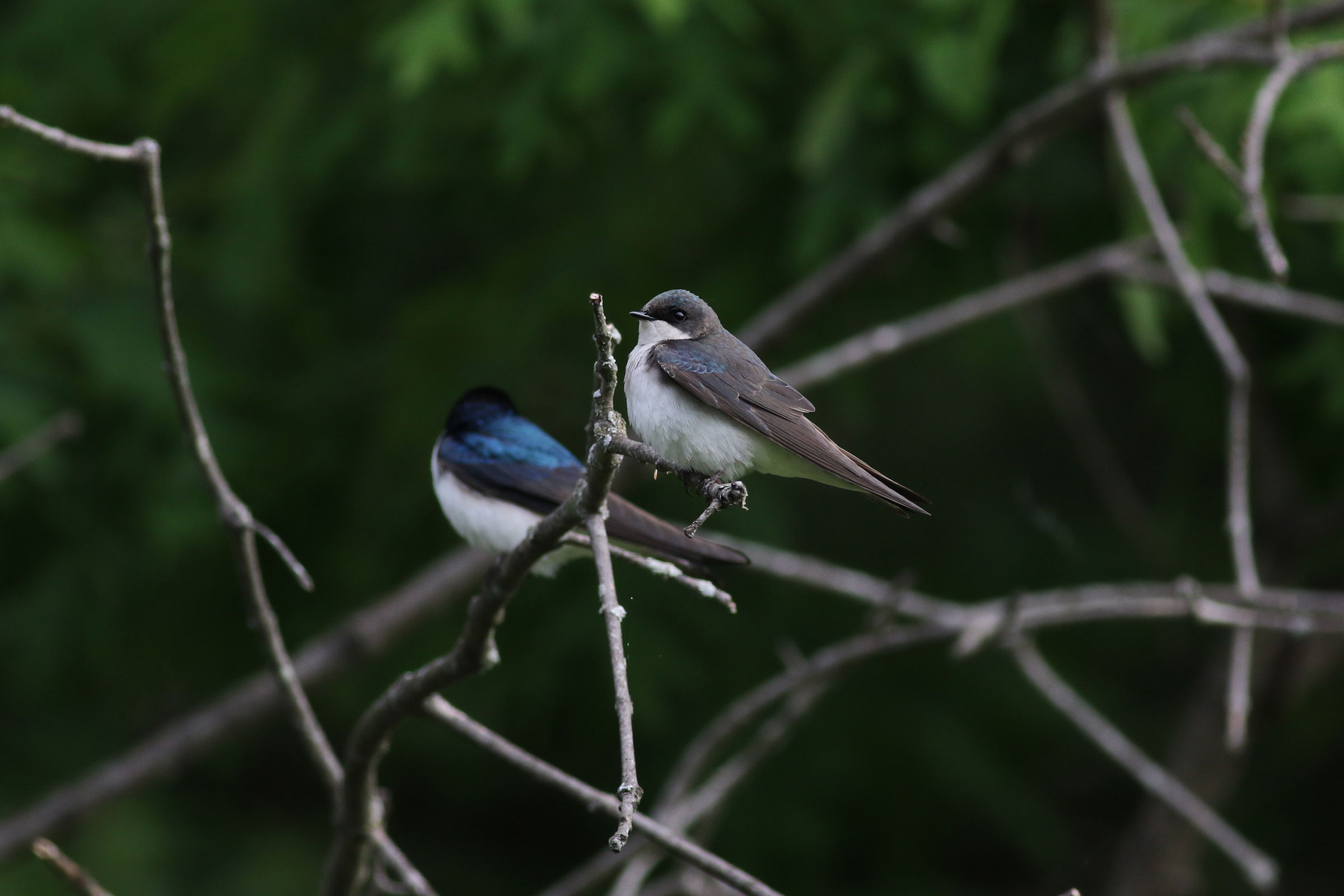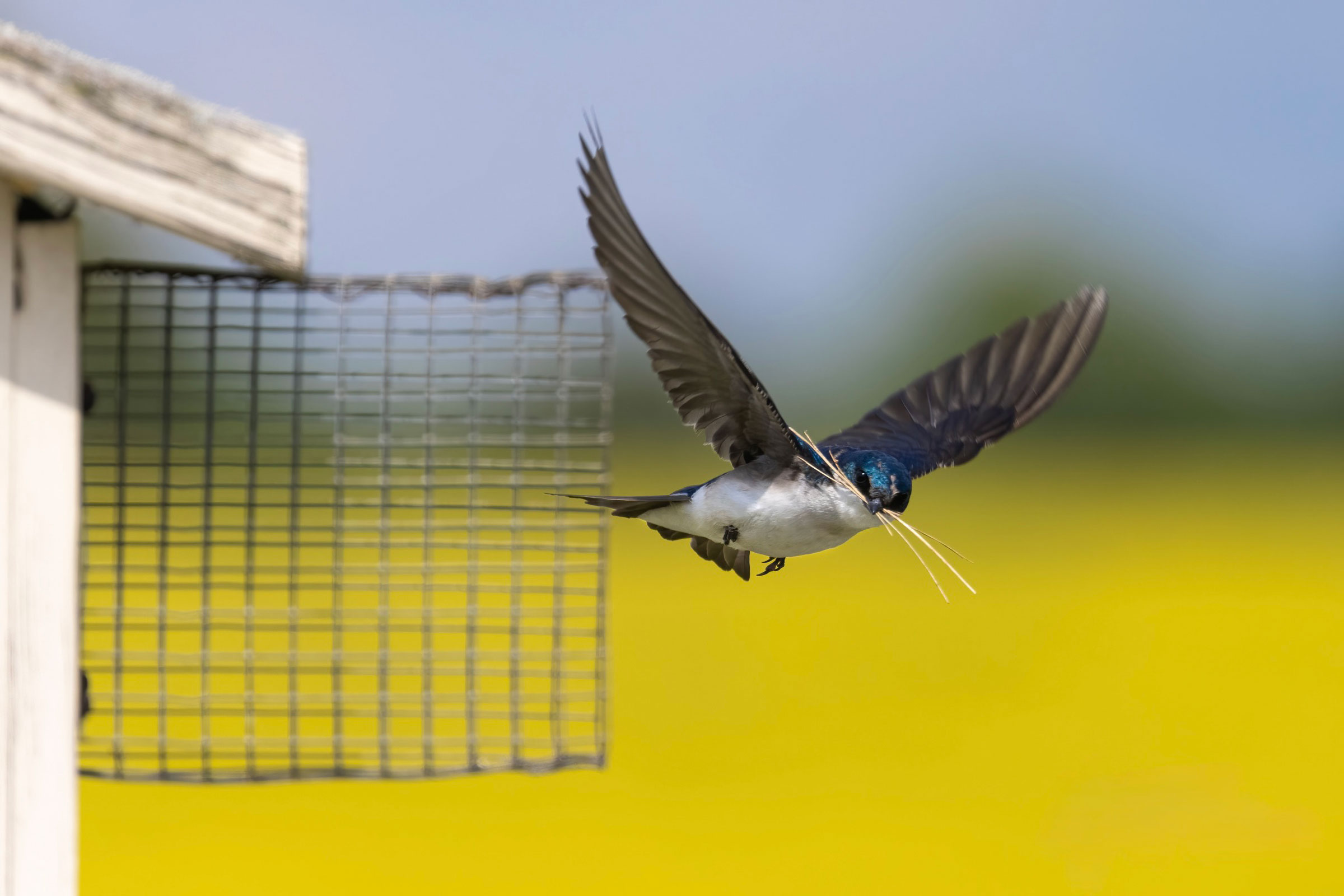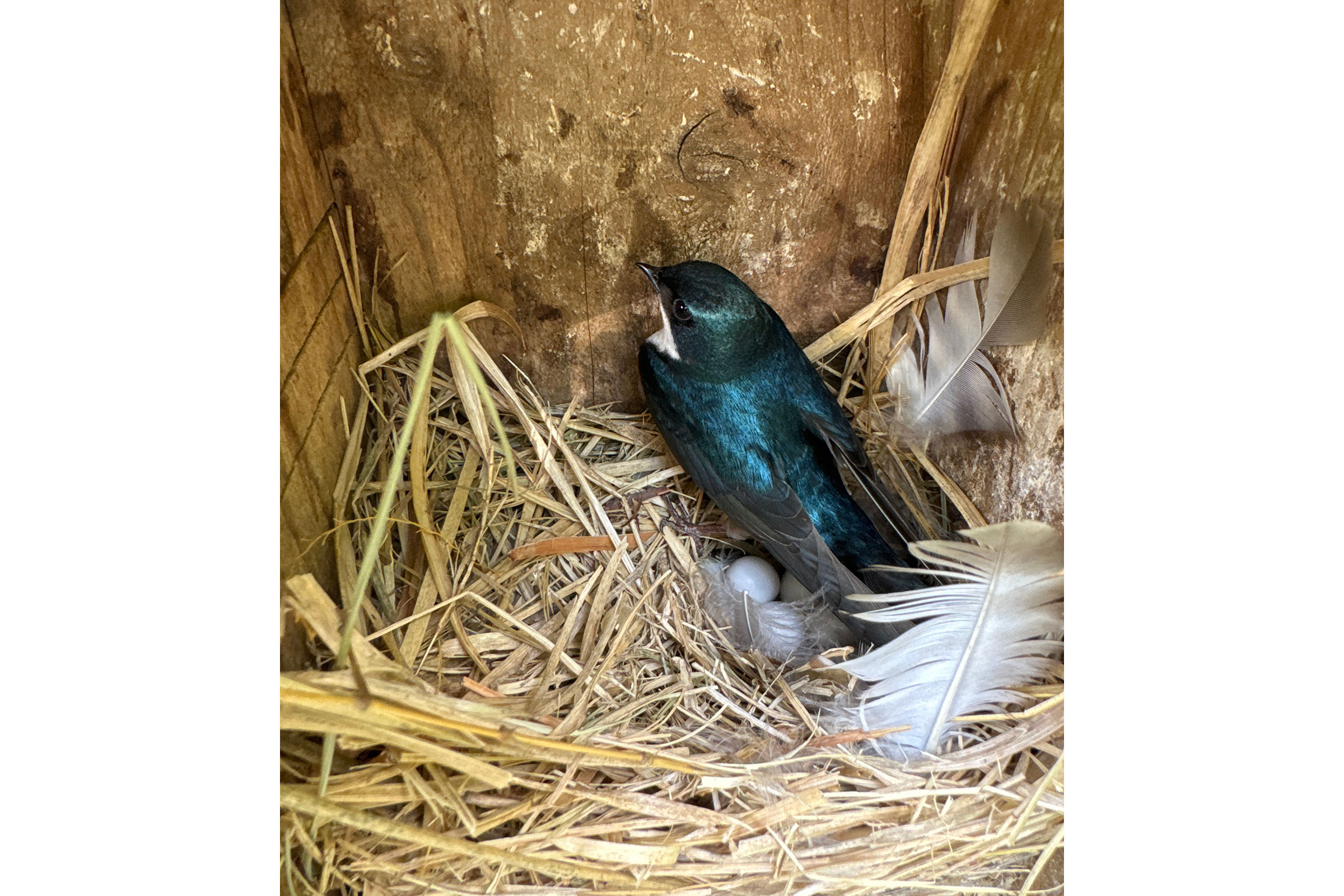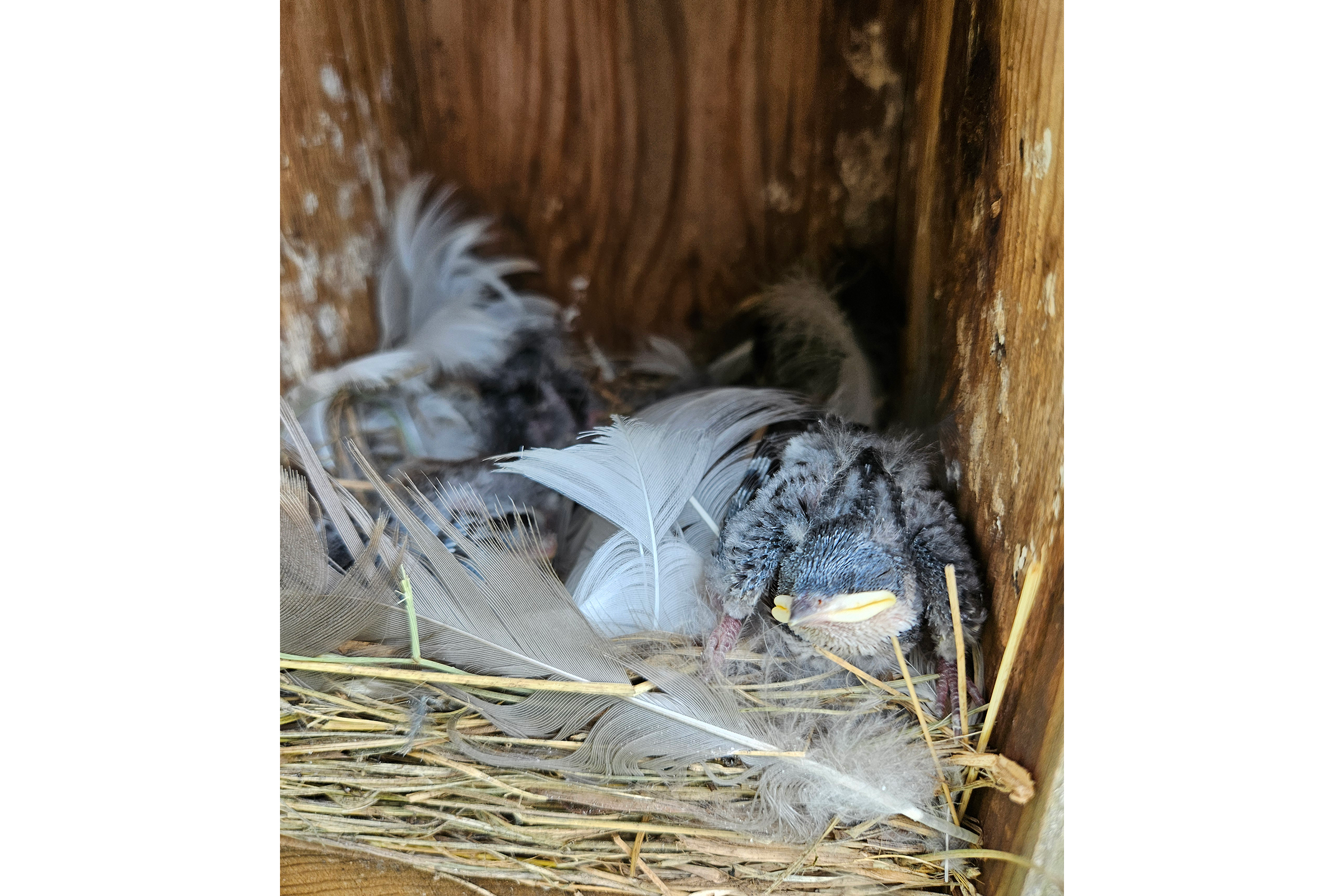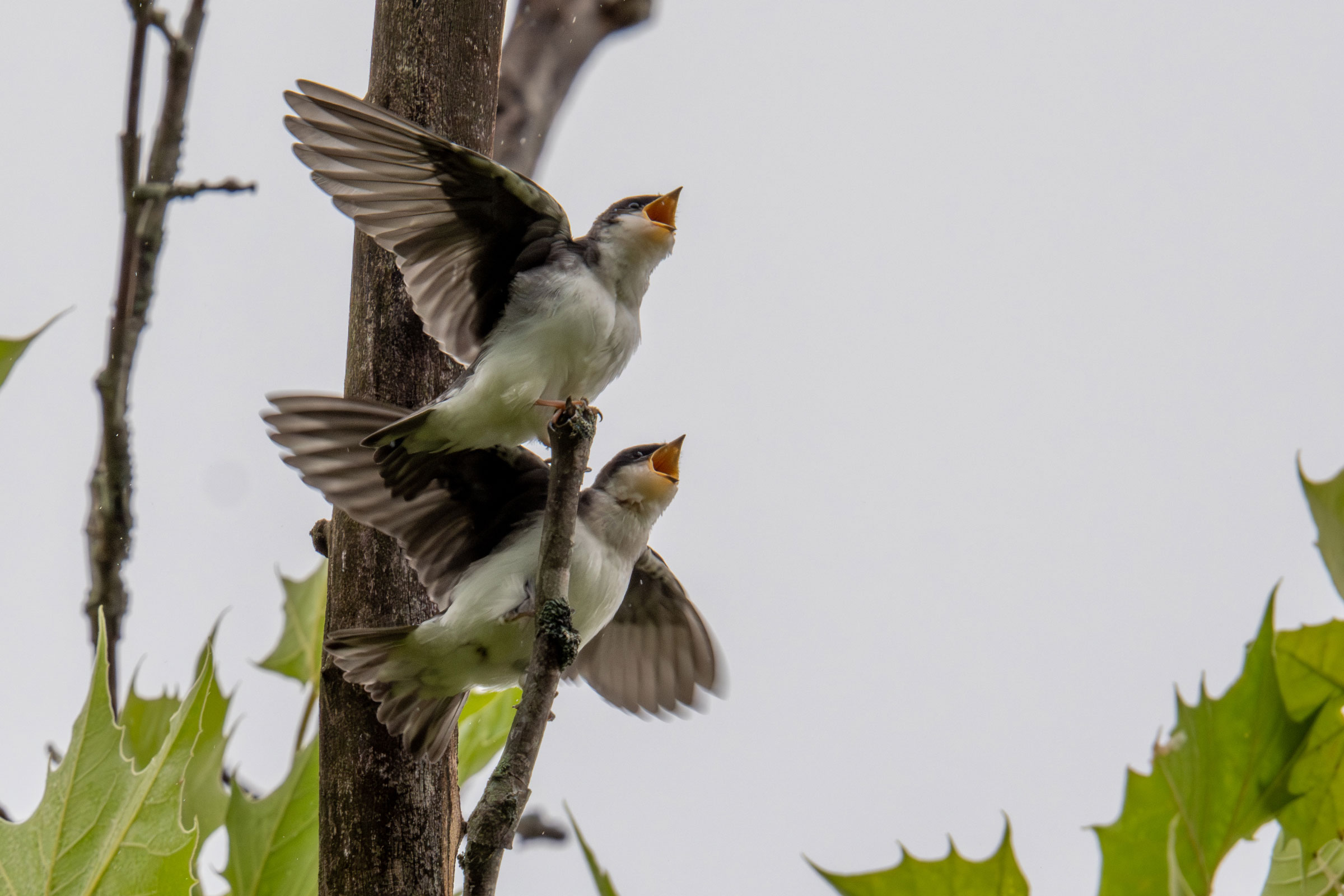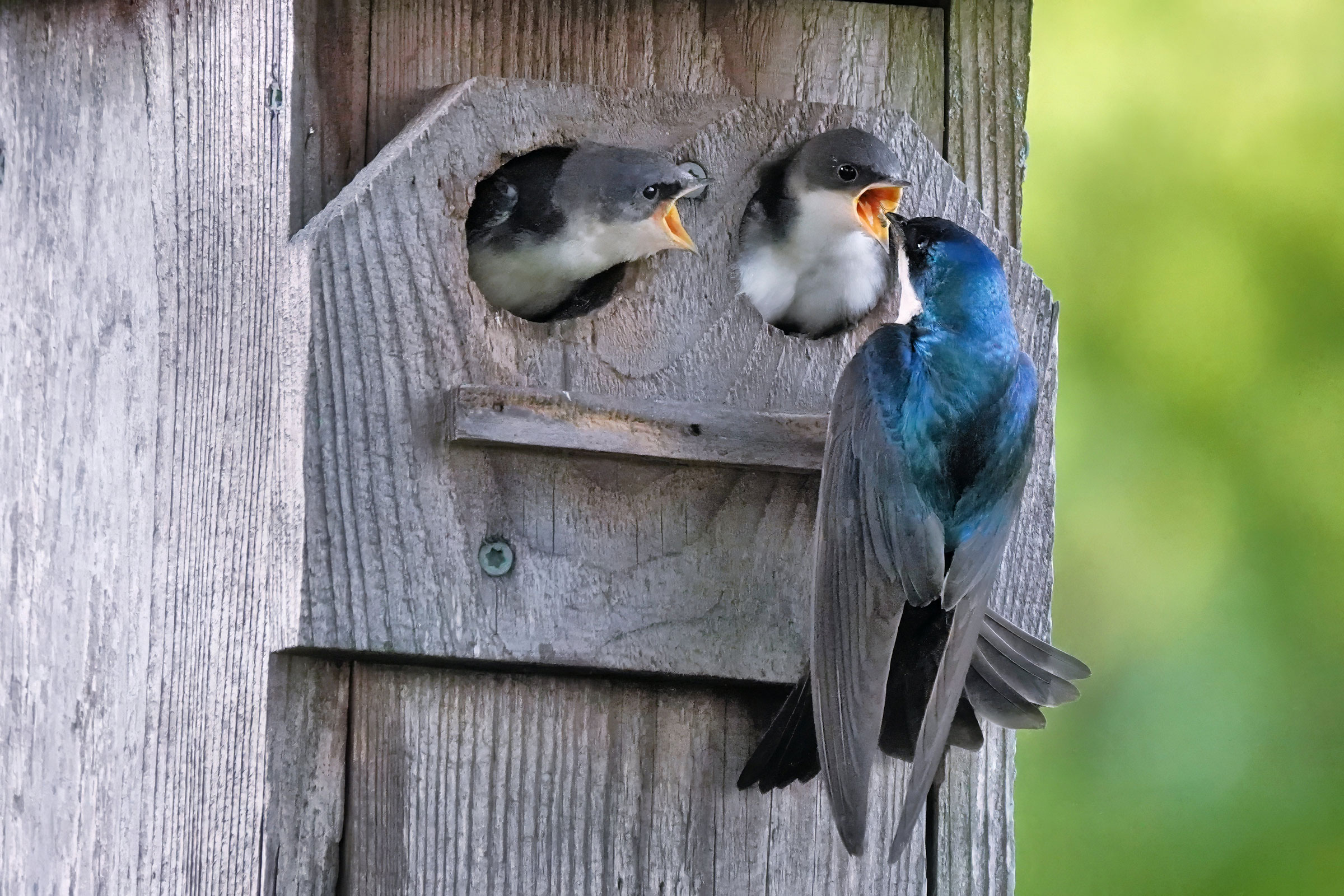Introduction
From March through August, look over any pasture or athletic field in Virginia and you are likely to see iridescent blue Tree Swallows in pursuit of flying insects. These handsome swallows nest in tree cavities in a range of habitats, including open habitats, wooded wetlands, and forests with dead trees, and use nest boxes (Winkler et al. 2020). Researchers in Virginia and elsewhere frequently use nesting boxes to attract Tree Swallows for studies monitoring pollution in the insect food chain (Custer 2011). The female builds a nest of grasses and adorns it with varying objects, including feathers from other birds, animal hair, and sometimes discarded cigarette filters (Winkler et al. 2020). In Virginia, Tree Swallows have begun to nest twice in the same season (Monroe et al. 2008).
Breeding Distribution
Trees Swallows occur throughout much of Virginia (Figure 1). Given their range of occupied habitats, their likelihood of occurrence increases as the proportion of agricultural lands, developed lands, and forest cover in a block increases, while they are less likely to occur in heavily forested areas and other locations lacking open habitats or suitable nest locations.
Due to model limitations, the probability of occurrence during the First Atlas and its change between the two Atlas periods could not be modeled (see Interpreting Species Accounts). For more information on where this species occurred during the First Atlas, please see the Breeding Evidence section.
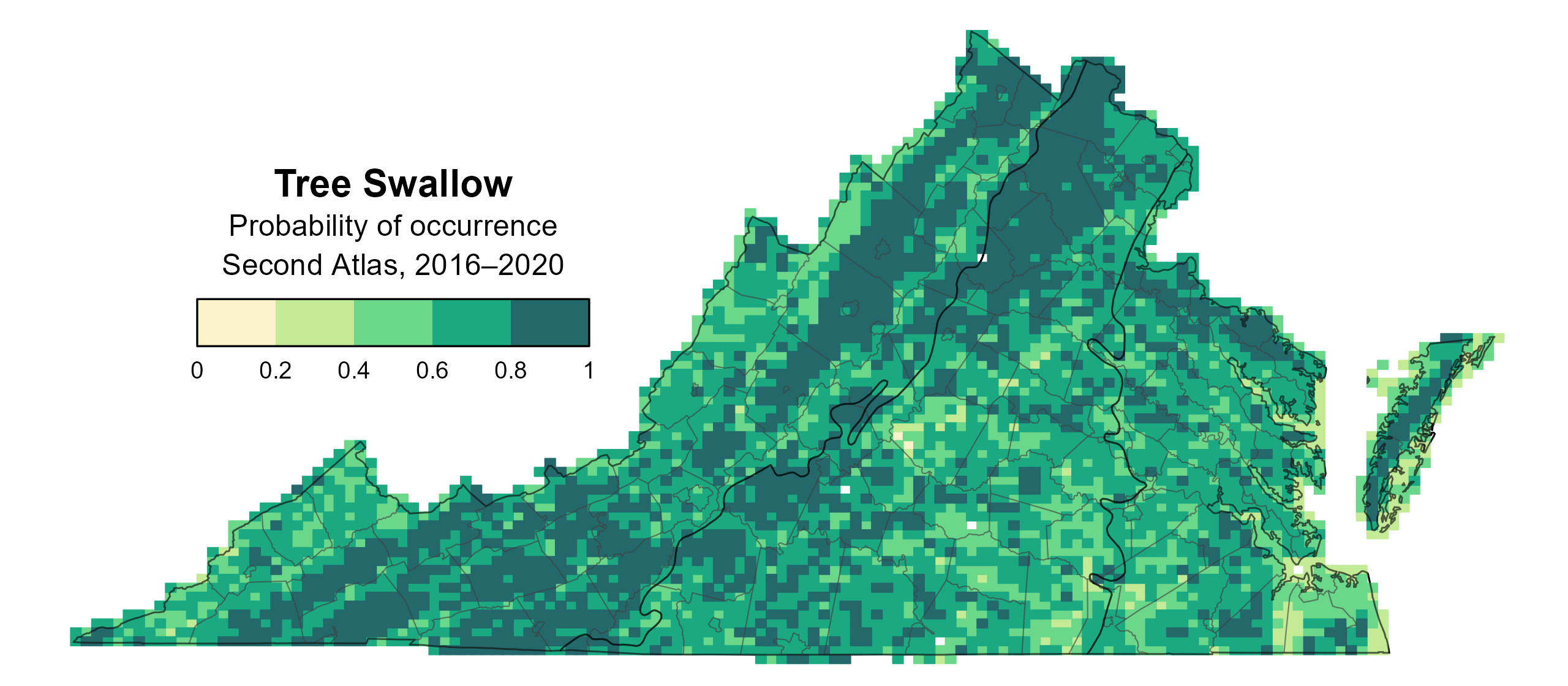
Figure 1: Tree Swallow breeding distribution based on probability of occurrence (Second Atlas, 2016–2020). This map indicates the probability that this species will occur in an Atlas block (an approximately 10 mi2 [26 km2] survey unit) based on environmental (including habitat) factors and after adjusting for the probability of detection (variation in survey effort among blocks).
Breeding Evidence
Tree Swallows were confirmed breeders in 694 blocks and 105 counties and probable breeders in an additional five counties (Figure 2). Tree Swallows, which once bred only north of Virginia, also have expanded their breeding range dramatically southward in recent decades, now extending as far as Alabama (Wright et al. 2019; Winkler et al. 2020). This population expansion is likely reflected in the substantial increase in breeding confirmations from the First Atlas to the Second Atlas (Figure 3; see also Population Status).
The earliest confirmed breeding behavior was recorded in early spring when occupied nests were documented on March 23. In addition to occupied nests, breeding was confirmed primarily through nests with young (April 13 – July 29) and recently fledged young (May 15 – September 12) (Figure 4).
For more general information on the breeding habits of this species, please refer to All About Birds.

Figure 2: Tree Swallow breeding observations from the Second Atlas, 2016–2020. The colored boxes illustrate Atlas blocks (approximately 10 mi2 [26 km2] survey units) where the species was detected. The colors show the highest breeding category recorded in a block. The numbers within the colors in the legend correspond to the number of blocks with that breeding evidence category.
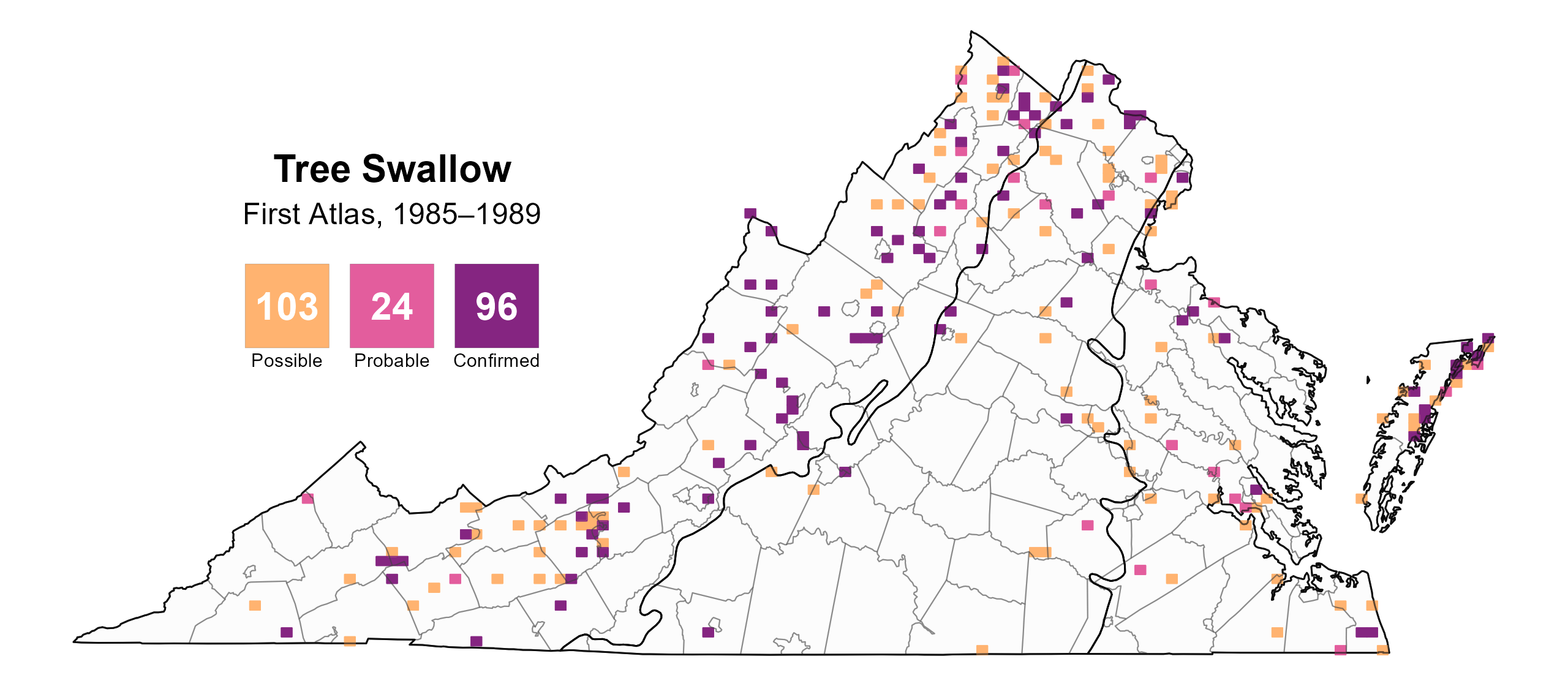
Figure 3: Tree Swallow breeding observations from the First Atlas (1985–1989). The colored boxes illustrate Atlas blocks (approximately 10 mi2 [26 km2] survey units) where the species was detected. The colors show the highest breeding category recorded in a block. The numbers within the colors in the legend correspond to the number of blocks with that breeding evidence category.
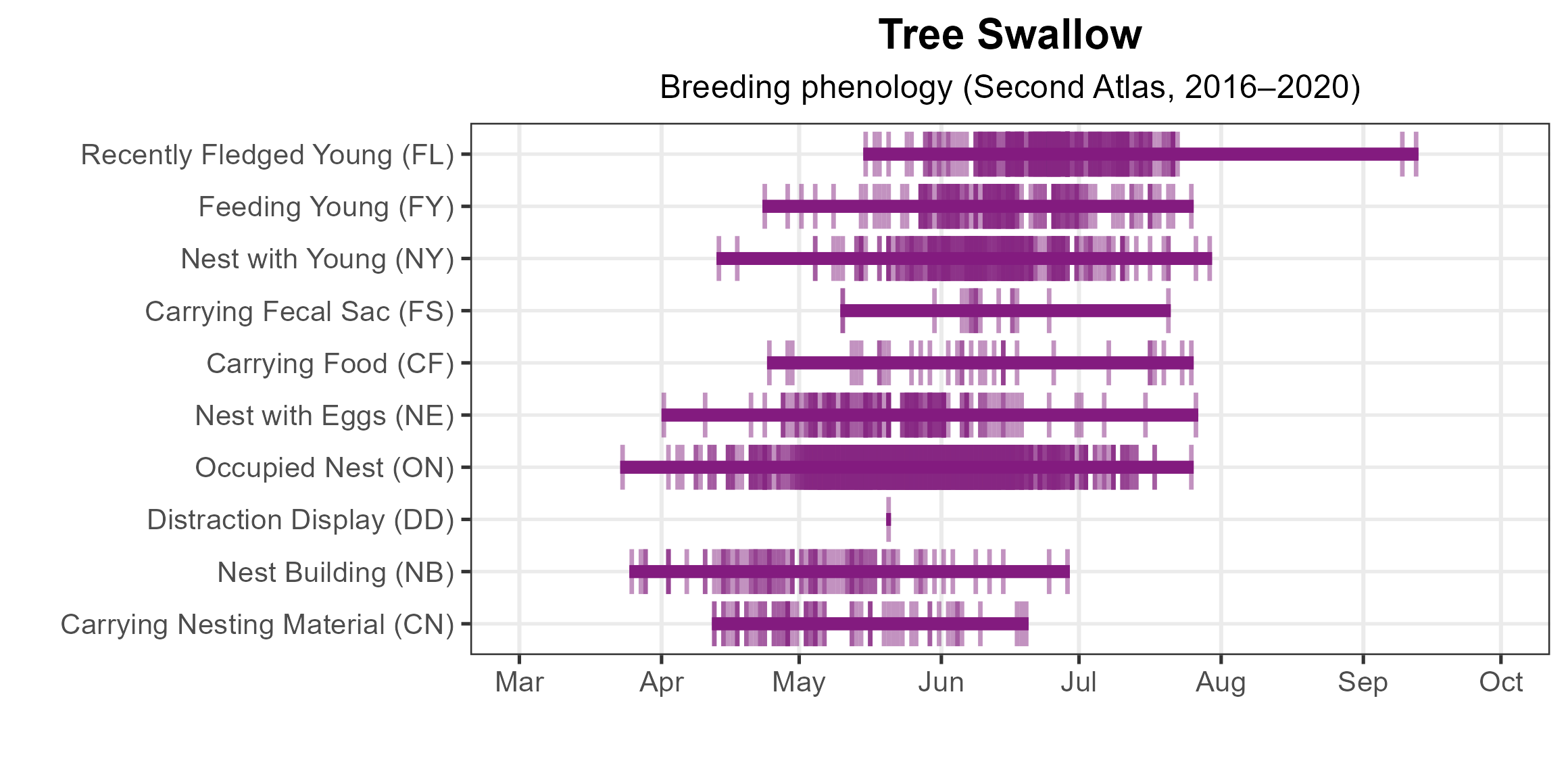
Figure 4: Tree Swallow phenology: confirmed breeding codes. This graph shows a timeline of confirmed breeding behaviors. Tick marks represent individual observations of the behavior.
Population Status
Limitations imposed by the model and data prevented the development of an abundance model for the Tree Swallow. Based on the North American Breeding Bird Survey (BBS), the Tree Swallow population increased by a significant 6.63% annually from 1966–2022 in Virginia, and the rate of increase in the population between Atlases was even greater, a significant 8.84% per year from 1987–2018 (Hostetler et al. 2023; Figure 5).

Figure 5: Tree Swallow population trend for Virginia as estimated by the North American Breeding Bird Survey. The vertical axis shows species abundance; the horizontal axis shows the year. The solid line indicates the estimated population trend; there is a 97.5% probability that the true population trend falls between the dashed lines. The shaded bars indicate the First and Second Atlas periods.
Conservation
Tree Swallows are common and widespread throughout Virginia and their range. They are not considered a species of conservation concern, and there are no dedicated conservation projects underway in Virginia. Information on nest-box construction and placement can be found at the Cornell Lab of Ornithology’s NestWatch website.
Interactive Map
The interactive map contains up to six Atlas layers (probability of occurrence for the First and Second Atlases, change in probability of occurrence between Atlases, breeding evidence for the First and Second Atlases, and abundance for the Second Atlas) that can be viewed one at a time. To view an Atlas map layer, mouse over the layer box in the upper left. County lines and physiographic regional boundaries (Mountains and Valleys, Piedmont, and Coastal Plain) can be turned on and off by checking or unchecking the box below the layer box. Within the map window, users can hover on a block to see its value for each layer and pan and zoom to see roads, towns, and other features of interest that are visible beneath a selected layer.
View Interactive Map in Full Screen
References
Custer, C.M. (2011). Swallows as a sentinel species for contaminant exposure and effect studies. In Wildlife Ecotoxicology: Forensic Approaches. Springer New York, NY, USA. 45–91.
Hostetler, J. A., J. R. Sauer, J. E. Hines, D. Ziolkowski, and M. Lutmerding (2023). The North American breeding bird survey, analysis results 1966–2022. U.S. Geological Survey, Laurel, MD, USA. https://doi.org/10.5066/P9SC7T11.
Monroe, A.P., Hallinger, K.K., Brasso, R.L. and Cristol, D.A. (2008). Occurrence and implications of double brooding in a southern population of Tree Swallows. The Condor 110:382–386.
Winkler, D. W., K. K. Hallinger, D. R. Ardia, R. J. Robertson, B. J. Stutchbury, and R. R. Cohen (2020). Tree Swallow (Tachycineta bicolor), version 1.0. In Birds of the World (A. F. Poole, Editor). Cornell Lab of Ornithology, Ithaca, NY, USA. https://doi.org/10.2173/bow.treswa.01.
Wright, H.C., Price, J.W., Trent, J.A., Soehren, E.C. and Rush, S.A., 2019. Southward breeding expansion of Tree Swallows in Alabama. Southeastern Naturalist 18:548–554.


